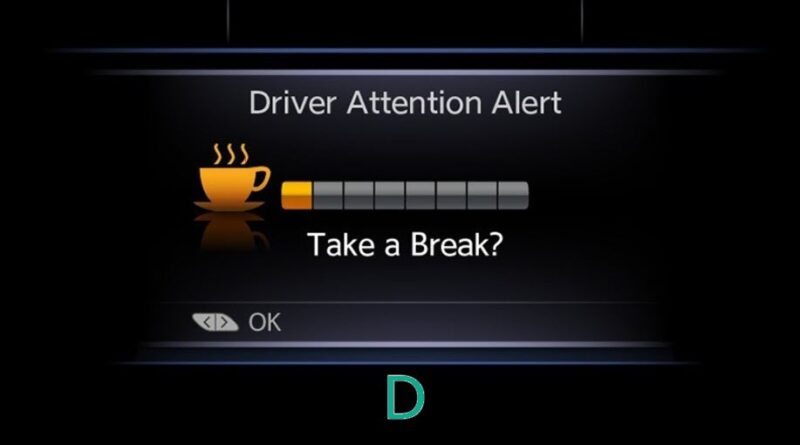Guide About Driver Attention Alert
In this article, we’ll explore what Driver Attention Alert is, how it works, and its benefits for road safety. In today’s fast-paced world, staying focused behind the wheel can be challenging. With distractions ranging from smartphones to the demands of daily life, drivers need all the help they can get to maintain their attention on the road. This is where Driver Attention Alert systems come into play.
What is Drive Attention Alert?
Drive Attention Alert is an advanced driver assistance system (ADAS) designed to monitor and evaluate a driver’s alertness and focus. By analyzing various factors such as steering patterns, eye movements, and vehicle behavior, this system can detect signs of driver fatigue or distraction and provide timely warnings to refocus the driver’s attention.
How Does Drive Attention Alert Work?
Drive Attention Alert systems use a combination of sensors, cameras, and sophisticated algorithms to assess the driver’s attention level. Here’s a closer look at the key components and their functions:
- Steering Behavior Analysis: By monitoring steering inputs, the system can detect erratic or inconsistent steering patterns that may indicate driver fatigue or distraction.
- Eye-Tracking Technology: Cameras mounted on the dashboard or rearview mirror track the driver’s eye movements and head position, identifying if the driver is looking away from the road for extended periods.
- Vehicle Positioning: The system monitors the vehicle’s position within the lane, detecting if the car is drifting or making sudden corrections that suggest the driver may not be fully attentive.
- Driver Inputs: Analysis of accelerator and brake pedal inputs can also provide clues about the driver’s state of alertness, such as delayed reactions or inconsistent pressure.
Features of Drive Attention Alert
Drive Attention Alert systems come with a variety of features designed to enhance driver safety and prevent accidents:
- Visual and Audible Warnings: If the system detects signs of inattention or drowsiness, it will alert the driver through visual cues on the dashboard and audible alarms.
- Haptic Feedback: Some systems incorporate haptic feedback, such as vibrations in the steering wheel or seat, to get the driver’s attention more effectively.
- Rest Recommendations: The system may suggest taking a break if it detects prolonged periods of inattention, helping drivers stay safe during long journeys.
- Adaptive Response: Advanced systems can adapt their sensitivity based on driving conditions, such as increased vigilance during night driving or in heavy traffic.
Benefits of Drive Attention Alert
Implementing Drive Attention Alert systems in vehicles offers numerous benefits, contributing to overall road safety:
- Reduced Accidents: By warning drivers of inattention or fatigue, these systems help prevent accidents caused by distracted or drowsy driving.
- Enhanced Driver Awareness: Continuous monitoring and feedback keep drivers aware of their state of alertness, encouraging them to stay focused on the road.
- Improved Long-Distance Driving: For long trips, these systems provide critical reminders to take breaks, reducing the risk of fatigue-related incidents.
- Peace of Mind: Knowing that the vehicle has an additional layer of safety monitoring allows drivers to feel more secure and confident behind the wheel.
The Future of Drive Attention Alert Systems
As technology advances, Drive Attention Alert systems are becoming more sophisticated and accurate. Future developments may include:
- Integration with Autonomous Driving: Enhanced monitoring systems will work seamlessly with autonomous driving features, ensuring that drivers remain alert even when engaging semi-autonomous modes.
- Artificial Intelligence (AI) Enhancements: AI algorithms will improve the system’s ability to predict and respond to driver behavior, providing even more precise warnings and recommendations.
- Health Monitoring: Integration with wearable devices could allow the system to monitor the driver’s health metrics, such as heart rate and stress levels, offering a more comprehensive assessment of driver readiness.
- Vehicle-to-Everything (V2X) Communication: Future systems may communicate with other vehicles and infrastructure to provide context-aware alerts, improving overall traffic safety.
Conclusion
Drive Attention Alert systems represent a significant advancement in vehicle safety technology. By continuously monitoring driver behavior and providing timely alerts, these systems help prevent accidents caused by distraction and fatigue. As these technologies continue to evolve, they will play an increasingly vital role in making our roads safer for everyone. Investing in a vehicle equipped with Drive Attention Alert is a proactive step towards enhanced safety and peace of mind on the road.
Buying a used VW. Buying used vauxhall, BMW, Jaguar, Ford, Volvo, Range rover, Bentley, Aston Martin, Porsche, Ferrari, Lamborghini, Maserati, Hyundai, Tesla

